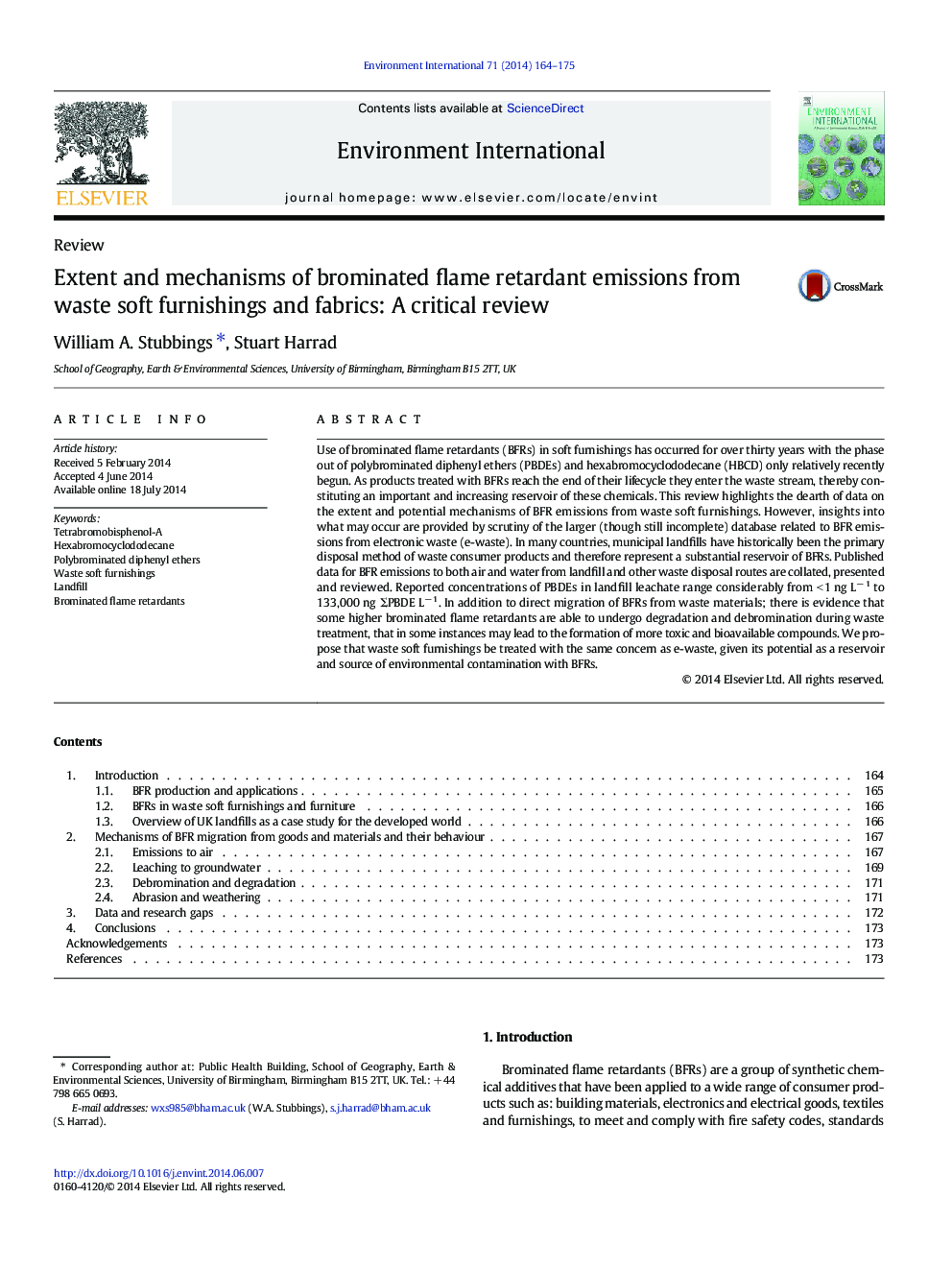| کد مقاله | کد نشریه | سال انتشار | مقاله انگلیسی | نسخه تمام متن |
|---|---|---|---|---|
| 4422776 | 1619057 | 2014 | 12 صفحه PDF | دانلود رایگان |
• Likely huge reservoir of BFRs associated with waste soft furnishings.
• Little is known about mechanisms via which BFRs migrate from such waste materials.
• Few studies exist on BFR emissions from regulated waste treatment activities.
• BFR emissions from waste soft furnishings are potential serious environmental concern.
Use of brominated flame retardants (BFRs) in soft furnishings has occurred for over thirty years with the phase out of polybrominated diphenyl ethers (PBDEs) and hexabromocyclododecane (HBCD) only relatively recently begun. As products treated with BFRs reach the end of their lifecycle they enter the waste stream, thereby constituting an important and increasing reservoir of these chemicals. This review highlights the dearth of data on the extent and potential mechanisms of BFR emissions from waste soft furnishings. However, insights into what may occur are provided by scrutiny of the larger (though still incomplete) database related to BFR emissions from electronic waste (e-waste). In many countries, municipal landfills have historically been the primary disposal method of waste consumer products and therefore represent a substantial reservoir of BFRs. Published data for BFR emissions to both air and water from landfill and other waste disposal routes are collated, presented and reviewed. Reported concentrations of PBDEs in landfill leachate range considerably from < 1 ng L− 1 to 133,000 ng ΣPBDE L− 1. In addition to direct migration of BFRs from waste materials; there is evidence that some higher brominated flame retardants are able to undergo degradation and debromination during waste treatment, that in some instances may lead to the formation of more toxic and bioavailable compounds. We propose that waste soft furnishings be treated with the same concern as e-waste, given its potential as a reservoir and source of environmental contamination with BFRs.
Journal: Environment International - Volume 71, October 2014, Pages 164–175
